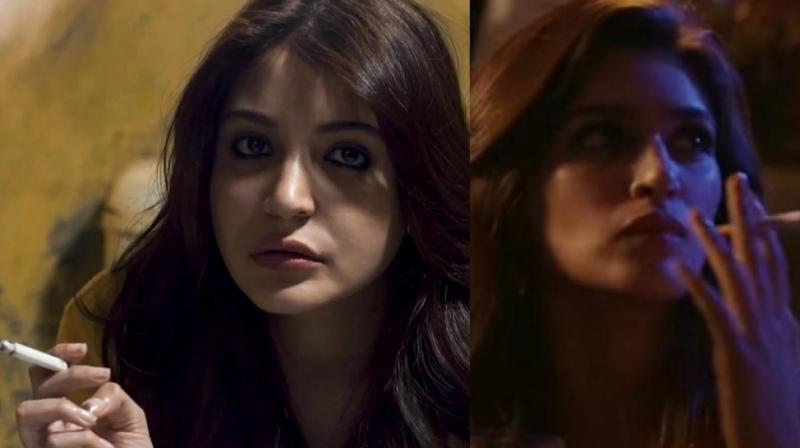After vamps, cigarette now being held by independent, liberated woman in films

When a man lights up a cigarette on screen, it is almost always a symbol of his masculinity. Every woman wants the Marlboro man, who is the epitome of all things charming and macho — this is what popular culture has always taught us.
However, the portrayal of the cancer stick gets more complicated when the one holding it is a woman. In the Bollywood of the ’70s and ’80s, it was the vamp, who would be conspiring to win over the hero’s affections with a cigarette between her fingers and a malicious smile curving up her lips. With the evolution of films, the portrayal of the vamp itself has gone out of fashion, as has the use of the cigarette as a negative symbol.
The cigarette is now held by the strong, independent, liberated woman. Take, for instance, the recently released Bareilly ki Barfi, and Lipstick Under my Burkha, or even previous releases like Pink and NH10. One can’t help but wonder if this is once again a trope that directors are using and yet again a way of stereotyping women.
“To be very frank about it, showing a woman smoking is a very easy way of showing that she is liberated,” says Navdeep Singh, director of NH10. “A cigarette is mobile, easily available and overall a simple way to show a woman subverting patriarchy and Anushka Sharma smoking in NH10 reflected just that.”
Author of the feminist fantasy novel Dark Things, Sukanya Venkatraghavan believes that while smoking can be shown as one of the ways in which a woman is liberating herself, it becomes problematic when that is the only way in which she is doing so. “You can say as a whole the symbolism of smoking has remained the same more or less for men throughout times. For women, it has gone to being a device to separate the vamp from the heroine, to a device which portrays how modern she is,” she explains.
“Movies like Lipstick Under My Burkha or Pink work because women are asserting their individuality in other ways as well. In Pink, especially, the women are very aware of the rights that they are defending. They’re strong women, who also party and smoke and do not believe that they should be persecuted because of that. However, to use only the symbol of a woman smoking, or a woman wearing short clothes or partying as a way of portraying her as modern is just lazy writing,” she adds.
Perhaps one of the most powerful scenes in NH10 is when Meera (Anushka’s character) takes out a cigarette from a pack gifted by her husband for her birthday. As she breathes in the smoke, one can almost feel the determination fill her up and it is in the very next scene that she strikes down his murderers.
“Something that’s vital in this aspect is the way Meera’s husband looks at the cigarette and the way the villains look at it. For her husband, it is just injurious to health, so he asks her to stop. For the antagonists in the movie, it is a more societal disapproval. So, her smoking in that scene is a blatant dissent to society, to the location that she is in, and especially to these men,” explains Navdeep.
The passing of the cigarette in Lipstick Under My Burkha is another scene that stands out as a sort of catharsis in the movie. Explaining how she has used the symbol however, director Alankrita Srivastava states that it was the shared moment that was important here and not the cigarette itself. “They could have been passing anything in that moment. It was about the bond that these women were forming that should be highlighted here. It may have been a bottle or rum, or anything really. The cigarette was incidental,” she explains.
The director does believe that the women and cigarettes have had a long and convoluted history of portrayal in film, though. “When a woman smokes, she is putting herself first in that moment, not the man or society, but her own satisfaction. So, of course, this was shown as a symbol of the ‘vamp’ in the ’70s and early films. Even when American brands first started to advertise with women, so that women would buy cigarettes, they were women that one would encounter at a speakeasy, not one that you’d take home. While the portrayal of smoking has changed in cinema, people’s mindset hasn’t. So, a woman smoking always stands out, and as soon as a normal woman or a strong woman is shown to smoke, you have questions like ‘why is a cigarette the symbol of normalcy or strength?’ No one asks this question when a man smokes on screen,” she signs off with a laugh.

